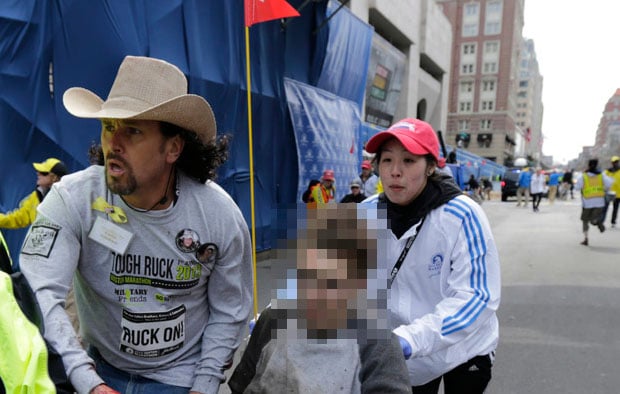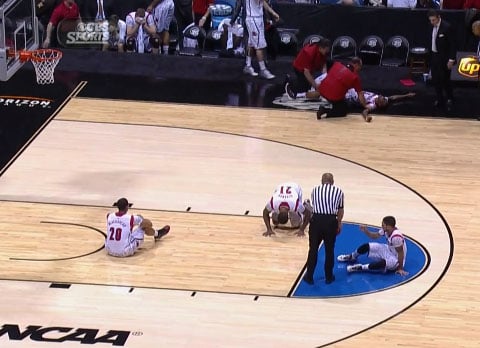A Blurry Double Standard? A Photo from the Boston Marathon Bombing
![]()
Before I begin with an observation of a photo that emerged from yesterday’s horrific bombings, I’d like to first take a moment to acknowledge the insignificance of my thoughts vis a vis the tragedy that has unfolded. There have been many great pieces that have already emerged in the first 24 hours like this one from Bruce Schneier of The Atlantic. That said, I blog about salient issues in photography, and there is no better time to discuss an issue than when it is in our collective consciousness.

From her Facebook page, Melissa commented,
Number 8 in this gallery is horrifying, but I’m very concerned with the In Focus’ decision to blur the face. Since when do legitimate print journalism outfits modify photos like this? Run it or don’t, but don’t enact a double standard for Americans when we’re totally cool running unadulterated photos of bombing victims from foreign lands.
Interestingly, the image was originally run without the pixelation, but The Atlantic decided to make adjust the image with the following statement:
Note: An earlier version of this gallery featured this photo with the graphic warning but without the image blurred. We have since decided to blur the subject’s face out of his respect for privacy.
My initial reaction was in opposition to Melissa. I supported the blurring, but not necessarily because of the typical argument the family members hadn’t been notified yet. I reasoned that the flow of real-time information today is different from an editorial decision to publish an image of a dead soldier a week or even a day later. Just like the Super Bowl, I argued to myself that we needed the 10 second tape delay to be able to censor out objectionable content until we had time to consider its impact.
But upon further reflection, I realized that this is bunk.

Consider for a moment that just two weeks ago, Louisville basketball player Kevin Ware suffered a devastating leg injury which broke his bone and pierced his skin, sending blood onto the basketball floor. This scene was broadcast live, and then in slow-mo, and then over and over again on TV and the Internet.
Consider the Pulitzer Prize Winning photography from Syria that featured maimed and murdered people.
Consider the World Press Photo grand prize photo that featured two dead children. The cat is already out of the bag. We live in Internet time.
We individually apply editorial decisions to every tweet, Facebook post, and Instagram that we create. There is no more waiting a week to gut check whether a photo is appropriate or not for publication. The bombing occurred in broad daylight at the finish line of the Boston Marathon. Dozens, if not, hundreds of people saw this victim roll by them in the wheelchair. This isn’t a case of violence behind closed doors where release of the image would violate reasonable privacy or would jeopardize the prosecution of the case.
A free society can determine the standards by which they live by. I certainly believe that children should be shielded from horrific images and pornography. But a well-informed society shouldn’t have a double standard for “us” vs “them” or “sports” vs “news.”
When it comes to newsworthy items, we should not allow ourselves to censor the flow of information. As Schneier opined in the aforementioned piece, “…we need to be vigilant not to weaken the very freedoms and liberties that make this country great, meanwhile, just because we’re scared.”
Let the news flow freely, gruesomely if necessary. And let’s refuse to have our eyes covered in the face of adversity.
About the author: Allen Murabayashi is the Chairman and Co-founder of PhotoShelter. Allen is a graduate of Yale University, and flosses daily. This article originally appeared here.